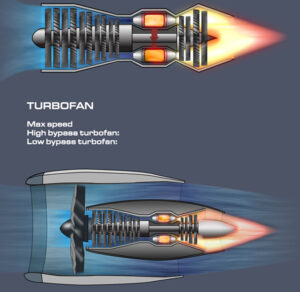We’re sending more and more stuff into space
Since the advent of human space exploration in the late 1950s, we have launched an increasing amount of satellites into orbit. The increase was gradual for decades, until the 2010s, where there has been exponential growth.
Why has there been the sudden increase? This graph provides some hints. But before we dissect the data, let’s first go over some basics.
Payload and rocket body definitions
Space-Track.org where the data for this chart comes from, defines a payload as “Any object not classified in the SATCAT as a rocket body or debris is considered a payload.” SATCAT is short for ‘satellite catalog’.
It then defines a rocket body as “The propulsion unit(s) used to deploy satellites into orbit. These are cataloged differently from standard debris because they can have mechanisms or fuel on board that can affect the orbital behavior of the rocket body even after long periods of time. Rocket bodies are also constructed to endure high temperatures and stresses associated with launch so they have a greater probability of surviving reentry and require closer attention than most debris.”
Therefore, this chart considers anything humans have sent into orbit that is not small debris. This includes satellites, space stations, and rocket bodies.
The four types of orbit
An orbit is the sustained path an object follows as it circles around a planet. Objects stay in orbit through the interplay of forward momentum and the force of gravity pulling it to the planet.
There are four main classifications of orbit based on their distance from the surface of the Earth:
Geostationary orbit – an orbit of 38,786km from the surface of the Earth. This is the altitude at which objects circle the Earth at the same rate as the Earth’s rotation. Satellites in geostationary orbit appear to stay at the same point in the sky when viewed from the surface of the Earth. Satellites sometimes need to be in geostationary orbit to point at fixed locations on the Earth.
High Earth orbit – an orbit further out than geostationary orbit. Satellites in high Earth orbit are typically used for scientific studies.
Medium Earth orbit – an orbit approx. 20,200km from the surface of the Earth. At this altitude, a satellite will circle the Earth twice in 24 hours. This is the orbit used by GPS satellites.
Low Earth orbit – an orbit of 2,000km or less from the surface of the Earth. Launching satellites into low Earth orbit is easier and cheaper than higher orbits. As satellites in low Earth orbit are closer to the surface of the Earth, it takes less time for information to be transmitted.
What does the data show us?
Ever since 1958, the number of low Earth satellites in orbit has grown at a much faster rate than those of the deeper space orbits. This is because of the relative ease and cheaper price tag of launching orbits closer to the surface of the Earth.
Even so, the chart shows an explosion of low Earth objects in orbit since the mid 2010s, further widening the gap. While the high Earth, medium Earth, and geostationary orbits have continued their linear growth, the low Earth orbit shows clear exponential growth in recent times.
What is causing this recent growth? Progress in rocket technology, largely headed by SpaceX, is making launches cheaper than ever. With this brings a burgeoning industry – low latency satellite internet. By having a network of low orbit satellites, high speed internet is brought to even the remotest corners of the Earth.
Two companies leading this movement, Starlink and OneWeb, each plan to launch more than 40,000 satellites in the coming years. So our skies are certainly set to become busier and busier.



